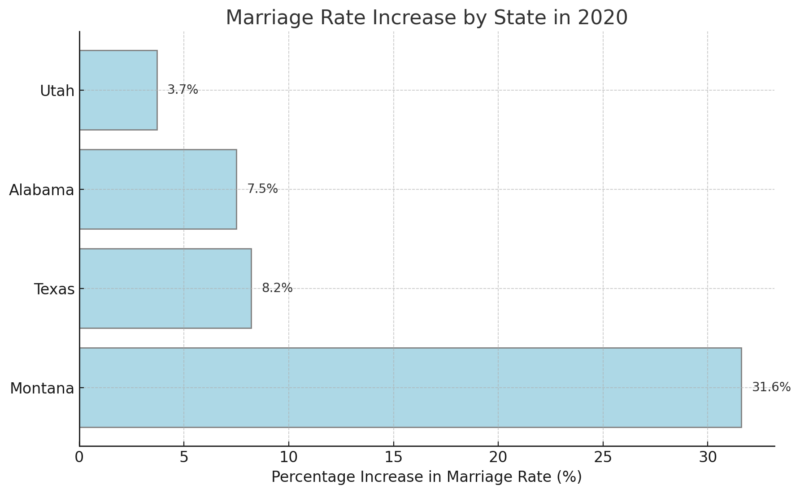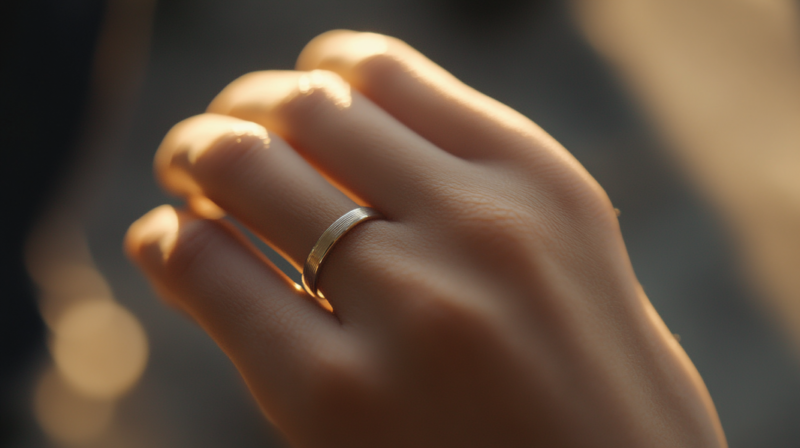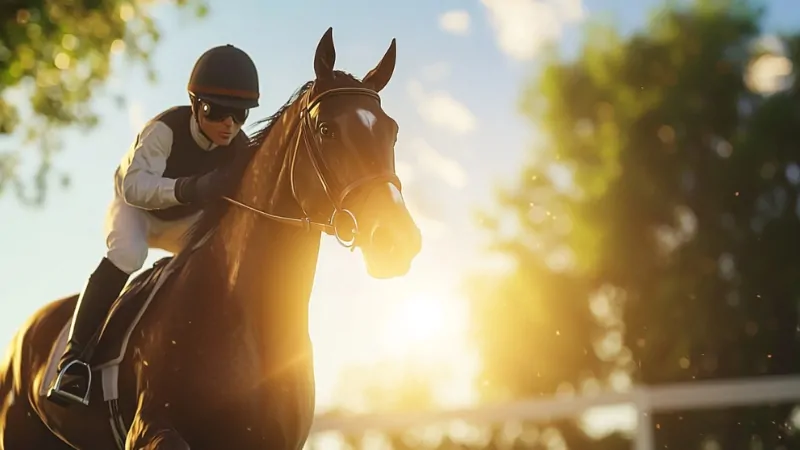Many social and health markers were significantly disrupted in 2020 with the pandemic. Mortality rates increased, and fewer people sought medical care.
Fertility rates dropped sharply.
Employment levels and other economic indicators were greatly impacted. The workplace changed drastically. Education faced unprecedented challenges in 2020.
Another social marker impacted by the pandemic was marriage in the United States.
The number of marriages declined by 16.8% between 2019 and 2020, from 2,015,603 to 1,676,911. The 2020 number of marriages was the lowest recorded in the U.S. since 1963.
The marriage rate fell 16.4% from 2019 to 2020, from 6.1 marriages per 1,000 to 5.1 per 1,000.
Table of Contents
ToggleWhat Happens in Vegas Didn’t Happen as Much in 2020

At the state level, declines in marriage rates were widespread. Forty-six states and the District of Columbia saw declines in marriage during 2020.
The biggest declines occurred in the following states: Hawaii (47.9%), California (43.9%), New Mexico (43.3%), New York (37.5%), and Louisiana (33.3%).
These declines were statistically significant except in three states: Idaho, South Dakota, and Wyoming, where declines were only 2%.
Nevada had the highest marriage rate in the U.S. in 2020, as in previous years, but the rate was down 18.9% from 2019.
Impact of the COVID-19 Pandemic on U.S. Marriage Rates in 2020
Marriage Rates in the United States Continue to Decline
Marriage rates reached an all time low in the United States in 2020 at 5 marriages per 1,000 population followed by a modest rebound in 2021 to the second lowest rate of all time of 6 marriages per 1,000 population. Less… pic.twitter.com/bl9EszURiu
— StatCloud (@StatisticCloud) September 26, 2023
The COVID-19 pandemic significantly disrupted numerous social and health indicators, including marriage rates in the United States.
The total number of marriages in 2020 dropped sharply by 16.8%, from 2,015,603 in 2019 to 1,676,911 in 2020, marking the lowest number of marriages recorded since 1963.
The marriage rate similarly fell from 6.1 per 1,000 people in 2019 to 5.1 per 1,000 in 2020.
Increases in Some States

Despite the national downward trend, a few states saw increases in marriage rates. Notably, Montana’s marriage rate rose by 31.6%, followed by Texas (8.2%), Alabama (7.5%), and Utah (3.7%) as per CDC.
These increases could be attributed to varying state restrictions on social gatherings and the handling of marriage ceremonies during the pandemic.
U.S. Marriage Rates (2019 vs. 2020)
Year
Total Marriages
Marriage Rate (per 1,000 population)
2019
2,015,603
6.1
2020
1,676,911
5.1
Broader Implications
The dramatic decline in marriages during 2020 reflects the wider social disruptions caused by the pandemic.
Restrictions on gatherings, financial uncertainty, and delays in wedding plans all contributed to the drop. However, 2021 data shows a rebound in marriage rates, signaling a potential recovery as restrictions eased and postponed weddings were rescheduled as per CDC Blog.
Unexpected Increases

Some changes in 2020 may be due to reporting issues, which also became a factor during the pandemic.
Here are additional data:
State-by-state comparisons are available on the CDC/NCHS website: CDC/NCHS Statistics of the States.
- CDC/NCHS Vital Statistics System, National Marriage and Divorce Rates 2000-2020
- CDC/NCHS Vital Statistics System, Marriage and Divorce Rates Supplement
- CDC/NCHS Vital Statistics System, State Marriage Rates 1990-2020
Related Posts:
- Montana Population: 13 Key Facts for 2025
- San Francisco’s Population Loss Among Biggest in the US
- The State with the Fewest People Is One of the Biggest
- Key Facts About the Maternal Mortality Rate in Texas
- Trends in Premarital Cohabitation Rate 2006–2010
- Cardioversion Death Rate in 2025 - 16 Key Statistics…








